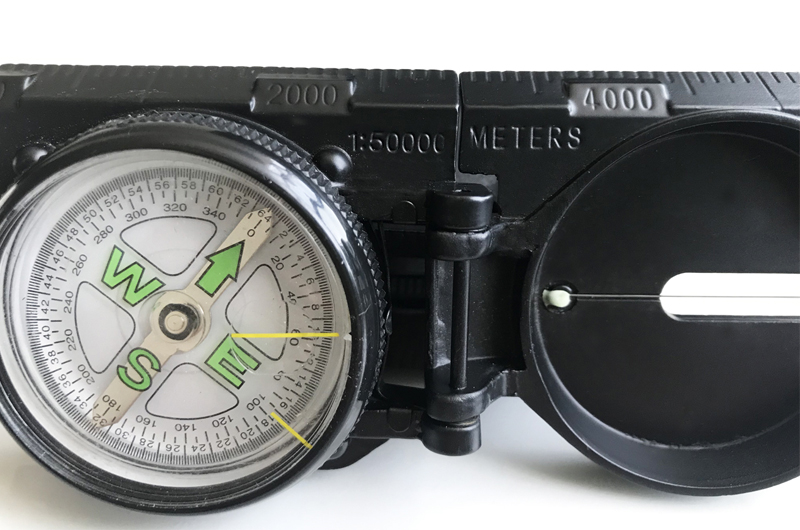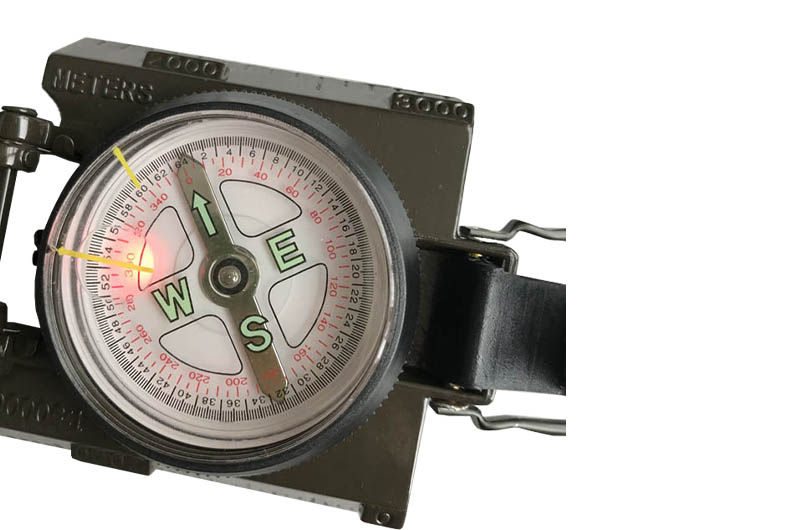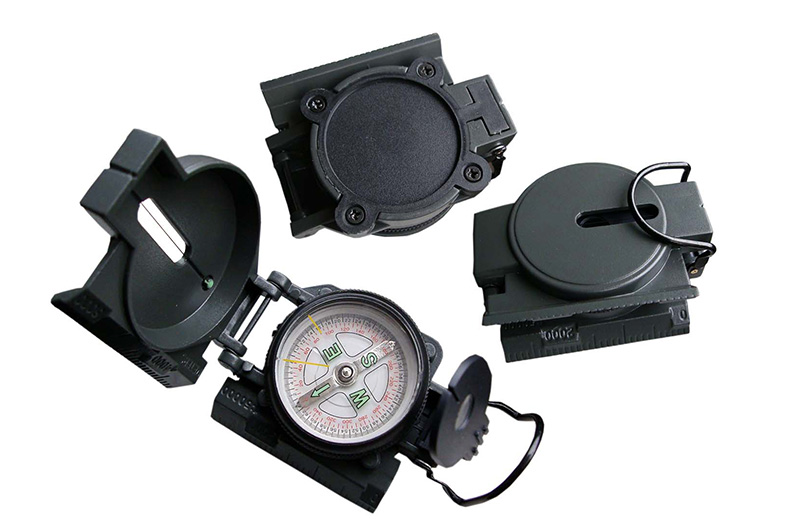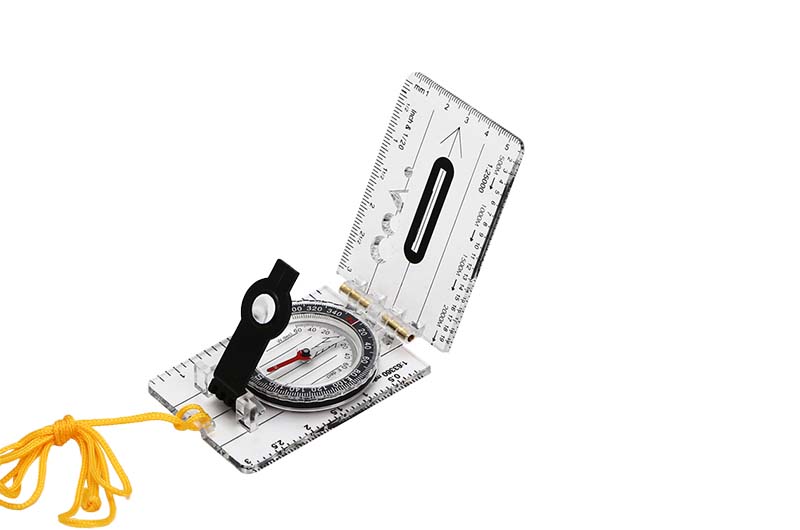Magnetic compass metal lensatic hiking compass
Product Informations
| Model: |
L45-7 |
L45-8A |
| product size | 7.6X5.7X2.6cm | 76*65*33mm |
| Material: | plastic+ acrylic+metal | Plastic +Aluminium alloy |
| Pcs/ carton | 144pcs | 144PCS |
| Weight/carton: | 24kg | 17.5KG |
| Carton size: | 44*36*25CM | 42X33X32cm |
| Short Description: | Outdoor Survival Compass Metal Mountaineering Camping Travel North Compass | Led Pocket Military Compass With Double Scale Rulers |
Magnetic Compass:
The magnetic compass is the most familiar compass type. It functions as a pointer to “magnetic north”, the local magnetic meridian, because the magnetized needle at its heart aligns itself with the horizontal component of the Earth’s magnetic field. The magnetic field exerts a torque on the needle, pulling the North end or pole of the needle approximately toward the Earth’s North magnetic pole, and pulling the other toward the Earth’s South magnetic pole. The needle is mounted on a low-friction pivot point, in better compasses a jewel bearing, so it can turn easily. When the compass is held level, the needle turns until, after a few seconds to allow oscillations to die out, it settles into its equilibrium orientation.
In navigation, directions on maps are usually expressed with reference to geographical or true north, the direction toward the Geographical North Pole, the rotation axis of the Earth. Depending on where the compass is located on the surface of the Earth the angle between true north and magnetic north, called magnetic declination can vary widely with geographic location. The local magnetic declination is given on most maps, to allow the map to be oriented with a compass parallel to true north. The locations of the Earth’s magnetic poles slowly change with time, which is referred to as geomagnetic secular variation. The effect of this means a map with the latest declination information should be used.[9] Some magnetic compasses include means to manually compensate for the magnetic declination, so that the compass shows true directions.
L45-7A Features:
1. Aluminum alloy case and plastic bottom
2. Aluminum thumb holding &bezel and zinc rope ring
3. 1:50000meter standard map scales
4. Both the standard 0 – 360 degree scale and 0 – 64Mil scale
5. Liquid filled for reliable readings
6. Logo size within 3CM diameter




L45-8A Features:
1. 1:25000&1:50000 meter map scales
2. Durable aluminum alloy case
3. Aluminum thumb holding and bezel
4. LED lights (including cell battery CR2025)
5. Both the standard 0 – 360 degree scale and 0 – 64Mil scale
6. Liquid filled for reliable readings
7. Logo size within 4CM diameter




How to find direction when you get lost?
1. Select three iconic landmarks. Landmarks must be something you can see and find on the map. When you don’t know where you are on the map, the most important thing is to use the compass to find out the direction, but it’s not easy to do this. Identifying landmarks that can be found on the map will help broaden your vision and help you reposition your direction
2. Aim the pointing arrow at the first road sign. As long as the road sign is not in your north, the magnetic needle will deflect. Twist the dial so that the directional arrow and the north end of the magnetic needle are in a straight line. At this time, the direction indicated by the pointing arrow is the direction you are looking for. Remember to adjust the deviation according to your area.
3. Use the map to find the location of the road sign. Lay the map flat on a flat surface, and then place the compass on the map so that the positioning arrow points to the absolute north on the map. Next, push the compass in the direction of the road sign on the map until the edge of the compass intersects with the road sign. At the same time, the directional arrow should remain pointing north.
4. Determine your position by triangulation. Draw a line along the edge of the compass and cross your approximate position on the map. You need to draw three lines altogether. This is the first one. Draw a line on the other two road signs in the same way. After drawing, a triangle is formed on the map. And your position is in the triangle. The size of the triangle depends on the accuracy of your orientation judgment. The more accurate the judgment, the smaller the triangle. After a lot of practice, you can even make three lines meet at one point
Tips:
You can also hold the two ends of the rectangular compass with both hands and hold the compass in front of your chest. In this way, the thumb will be L-shaped and the elbows will face both sides. When standing, face your target, keep your eyes on the front, and your body is facing the landmark you want to use to record your position. At this time, imagine that there is a straight line from your body to the compass. The straight line passes through the compass and is connected with the pointing arrow in a straight line. You can also press your thumb on your abdomen to make the compass hold more firmly. Remember not to wear steel belt buckles or other magnetic things, otherwise too close to the compass will cause interference.
More accurate results can be obtained by using nearby objects to determine the orientation. When you get lost in a barren place without any reference, it is more suitable to use triangulation.
Trust your compass. In 99.9% of cases, the compass is correct. Many places look very similar, so I still believe your compass is more reliable.
In order to improve accuracy, hold the compass in front of you and look down along the pointing arrow to find the road signs that can be used.
The top of the compass pointer is usually red or black. The north end is generally marked with n. If not, be sure to use the orientation of the sun to determine which end is the north end.
We have all kind of compasses, please kindly contact us to learn more, thank you.











